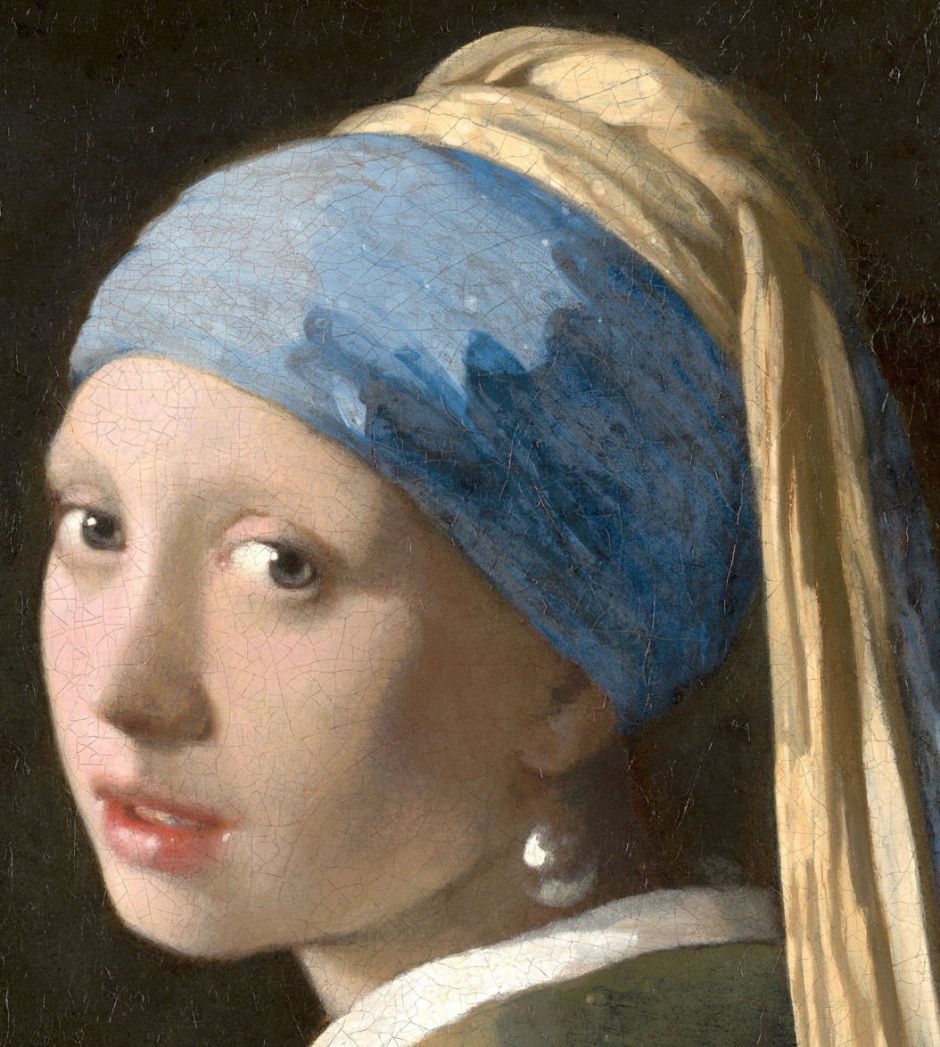The most notable painter who has used blurring in his paintings is Johannes (Jan) Vermeer (1632–1675). Between about 1658 and 1668, he painted a series of indoor figurative works ranging from portraits such as Girl with a Pearl Earring, through genre scenes like The Milkmaid, to what is almost certainly allegory in The Art of Painting. They appear to be the first and only paintings made before the late nineteenth century in which the edges of objects are intentionally blurred.
Before even considering why Vermeer did this, we first need to establish the optical basis for this blurring. With the benefit of our experience of photography and modern visual effects, there are four established reasons for blurring:
- motion,
- depth of field effects and bokeh,
- uncorrected optical defects in eyesight,
- edge hierarchy for compositional emphasis.
We should be able to distinguish these by observing which edges are most blurred, and which remain sharpest. If those are determined by objects in motion, or depth in the image, then those should be obvious.

Officer and Laughing Girl from about 1657-58 shows little variation in the sharpness of its edges, although the left edge of the officer’s tunic is probably the softest, where it’s brightest lit.
One of the best examples of Vermeer’s systematic use of blurred edges is also one of the first of his surviving paintings to show this phenomenon: The Milkmaid, from about 1658-59.

Look more closely now at the edges of the woman’s figure.

They’re sharpest around her left shoulder and upper arm, and soften as you look away towards her hands and the pitcher. Highlights on that pitcher and the pot below it are also decidedly blurry. These could be consistent with both motion blur and depth of field.

Bread and other objects on the table in front of the woman also show controlled use of blurring, most obviously in the highlights on the wicker basket.

Turning to Vermeer’s slightly later Woman Holding a Balance from around 1662-64, its overall focus is even softer. The edges of the tabletop in the centre of the canvas and the woman’s left hand are the crispest, and those further from that are noticeably softer, as would be consistent with depth of field. There’s nothing here to suggest the use of motion blur, though.

Similar effects are seen in Vermeer’s better-lit Young Woman with a Water Pitcher from the same period. Here the central focus is in the upper chest of the figure, where the edge between the split in her white mantle and the underlying deep ultramarine clothing is crispest, and the reflections on the pitcher and bowl are blurry, and consistent with depth of field. So too is the window, which could indicate motion.

Soft edges are obvious in Vermeer’s famous portrait of a Girl with a Pearl Earring, from about 1664-67. Seen even closer up in the detail below it’s obvious that Vermeer has softened most of its edges to some degree, even on highlights such as the white reflections on the pearl itself and the girl’s eyes.


Vermeer’s Mistress and Maid from about 1664-67 has many soft edges, particularly those of the maid in the left distance, whose head and forearms are blurry. The crispest edges are those of the mistress’s forearms, particularly the left as it crosses her clothing. These appear consistent with depth of field, not motion blur.

In Vermeer’s late The Art of Painting from about 1666-68, greatest sharpness is again slightly away from the geometrical centre of the canvas, in the woman holding a wind instrument, as shown in the detail below. The high tonal contrast between the marble tiles on the floor is softened in the foreground, and sharpens as they recede deeper into the picture, as would be expected in depth of field.

While there are some instances where Vermeer’s blurring could be consistent with motion, most of these paintings appear to show depth of field effects as might be observed through a lens with a shallow depth. They could also be consistent with his use of an edge hierarchy for compositional emphasis.
Recently, several attempts have been made to explain how Vermeer came to use blurring so successfully. One story that has gained some traction is that he used optical devices such as a camera obscura to lay out the forms within each of these scenes, a theory that has been repeatedly claimed by David Hockney among others. Most recently, though, it was realised that alone was insufficient to explain all the optical phenomena modelled so well in these paintings, and it has been proposed by Hockney and Tim Jenison that the artist coupled a concave mirror with another mirror, a system that took Jenison five years to develop and test.
It’s perhaps unsurprising that there’s no evidence whatsoever that Vermeer possessed or used a camera obscura or other optical device, although he was a close friend of the pioneer lens maker Antonie van Leeuwenhoek, at a time when there was considerable interest in optics.
Whether Vermeer arrived at his innovative treatment of edges and blurring by trial and error, close observation, or optical experiment appears irrelevant to his art. The fact is that, ever since people have been used to seeing blurring in photographs, his paintings have appeared those of true genius. Maybe he should also be credited as the inventor of what is now termed bokeh?

